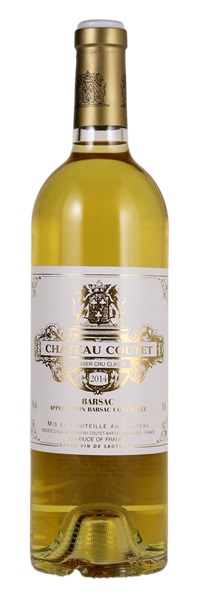
Shows the vivid, racy side of Barsac, with streaming flavors of pineapple, yellow apple, green plum and white ginger, displaying lovely energy from start to finish. Ends with honeysuckle and orange blossom notes to balance the richness.
There is a great thrust of rich botrytized fruit sliced through with Coutet’s trademark acidity...that lends this such vibrancy and tension. It possesses and almost clinical precision with long persistence on the finish.
...overall balance that is most impressive. Attractive scents of pear, white flowers and pastry convey and impression of finesse.
Honeyed and fragrant with apricot and citrus. Fantastically rich and viscous on the mid palate and has impressive length.